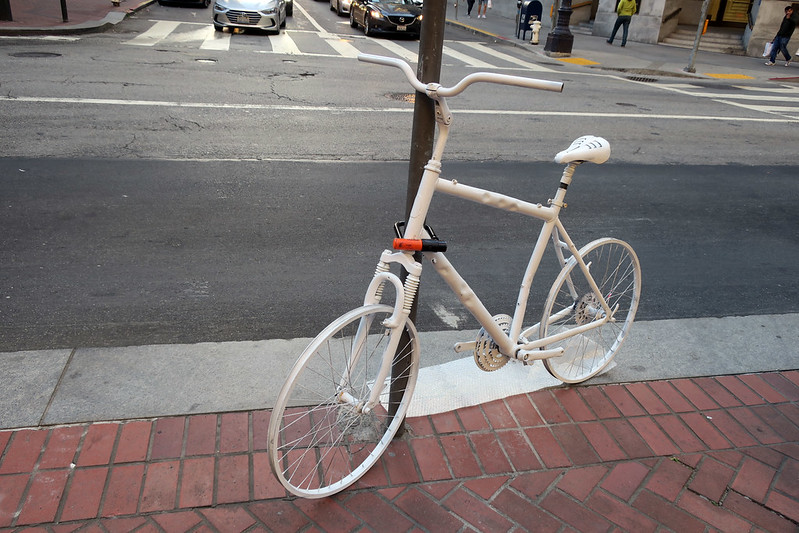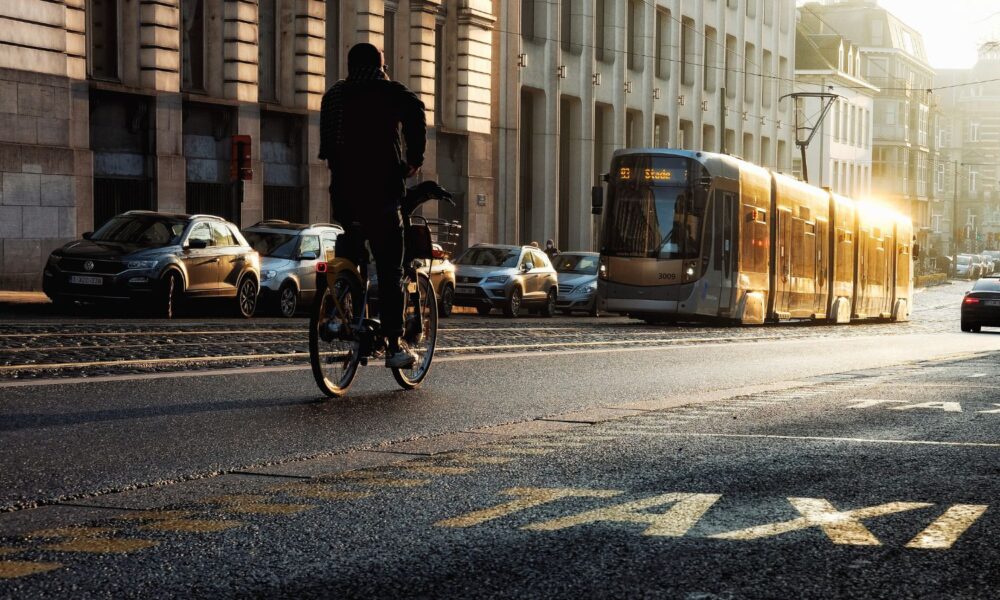Over the last decade we have often been promised a better, cleaner, greener mobility future. New ride hailing services (e.g., Uber founded in 2009; Lyft in 2012), public micromobility systems such as scooters and bikeshares, electrification, shared automated vehicles: all came with the promise of “faster, smarter, greener” cities that would be “connected, heterogenous, intelligent and personalized.” New narratives, startups, and mobility experiments were based on great optimism about electric, digital, autonomous, hybrid, micro, or even aerial (drone) mobilities. Former chief engineer for the New York City Department of Transportation Sam Schwartz promised “the rise of cities and the fall of cars.” There was a surge of policies for Vision Zero safer streets, transit-oriented development, active transport (e.g., walking, biking), building new bike lanes, and in general reducing automobile dependence. Electrification has also surged forward, led by California, now joined by six other states, pushing 100% of car sales being zero-emission by 2035. And several automakers have announced they will no longer make fossil fueled vehicles sometime between 2025 and 2040. Add to this major federal investments in electrifying transportation within the 2022 Inflation Reduction Act.
Are these new policies, technologies, and street designs finally bringing about the demise of fossil-fueled cars and the rise of a new low-carbon sustainable urbanism? What kinds of new streets, transport spaces, and mobilities are emerging at this pivotal conjuncture?

At first glance, it might seem that U.S. cities are finally moving toward more sustainable mobility futures. The mobility disruptions of the Covid-19 pandemic initially seemed to accelerate many of these positive trends, with a boom in ‘Open Street’ events, extended bike lanes, and “streateries.” However, in other respects, this has not been the case. Plummeting use of public transit led to a decline in revenue, at a time when public transportation was already chronically underfunded. When riders returned, the lack of investment showed up in public safety incidents and accidents—leading to an ongoing exodus of riders.
Pedestrian and bicyclist deaths from car crashes are also soaring, especially for Black and Hispanic Americans. According to the National Highway Traffic Safety Administration, nearly 43,000 people died in car crashes in the United States in 2021, and almost as many in 2022, a 10.5% increase over 2020. Globally, approximately 1.3 million people die in road crashes each year. Black and Brown people are disproportionately affected by traffic violence and road deaths, according to a recent study by Harvard Chan School of Public Health and Boston University. Pedestrian and cyclist injuries tend to be concentrated in poorer neighborhoods that have a larger share of Black and Hispanic residents, including formerly redlined neighborhoods that suffered mid-century “slum clearance.” “Driving while black” can be fatal, but so too can Biking While Black, as shown in the moving documentary directed by Yolanda Davis-Overstreet.
This post-pandemic world, more broadly speaking, is a time of disrupted and dangerous mobilities, uneven mobilities and blocked mobilities, that can be understood within a deeper context of the racialization of mobility. Charles T. Brown, the founder and CEO of Equitable Cities LLC, an urban planning, policy, and research firm, refers to the barriers to walking, biking, and e-scooter use in Black communities as “arrested mobility,” which “can be fraught with obstacles and risks that reflect structural racism and White supremacy.” Over-zealous policing continues to hinder the right to mobility of many Black, Brown and Indigenous people across the United States; many women, LGBTQIA+ and trans people, immigrants, the unhoused, and those without cars, remain under threat in many public spaces.
Decades-long efforts to build more equitable transportation systems, dismantle race and class barriers to mobility, and overcome “transportation apartheid” have failed, despite valiant efforts by scholar-activists like Dr. Robert D. Bullard. Recent transformations unfortunately include the growth of disrupted mobilities, arrested mobilities, forced mobilities, carceral mobilities, surveilled mobilities, unsustainable mobilities, splintered mobilities and deadly mobilities. Contrary to the dreams of sustainable urban planning and the utopian promises of techno-futurists, there has also been a realization of extreme mobility injustices and uneven mobilities that lead in more dystopian directions.
So we must ask: What has gone wrong, and why?

Towards mobility justice
To overcome the negative trends in our mobility experiences in the United States, we need more than a technologically-driven vision for future mobilities. And we need more than an urban planner’s view of safe streets and sustainable transport. We need to debunk techno-futurist narratives that promise seamless mobility in automated vehicles, and to understand why the elite “green” vision of sustainable mobility transitions has not been embraced by all. Only then will we make real progress on decarbonizing transportation and creating more just mobilities.
We need a sustainable mobilities transition that is grounded in mobility justice, based on just sustainabilities, and powered by people.
Those who have been harmed by current practices must be at the table making decisions too. We need mobility transitions and sustainable mobility policies that are equitable, fair, and have input from marginalized groups. That means beginning from a mobility justice outlook, as outlined in my book Mobility Justice: The Politics of Movement in an Age of Extremes. Mobility justice emerged from activist movements that challenged the status quo. Mobility justice highlights how power and inequality inform the governance and control of movement, shaping patterns of unequal mobility and immobility.
Sustainable “green” mobility has focused largely on active transport and electric vehicles, which are not necessarily the key concerns of the mobility-disadvantaged. New policies to promote more sustainable mobilities need to be careful not to exacerbate inequities. Earlier programs of “urban renewal,” for example, damaged Black and Brown communities by declaring them “blighted” and replacing affordable housing and commercial districts with massive highways. One person’s express route is another person’s neighborhood or town being bypassed, demolished, or simply left behind.
Today, some of those highways are being torn down and streets are being made more walkable and bikeable. Yet recent processes of “green gentrification” are also blamed for displacing racialized minorities and lower-income neighborhoods. The installation of bike lanes, pedestrian improvements and green amenities sometimes contributes to pushing insecure renters out, into more affordable neighborhoods that are also burdened with environmental pollution and transport inequities. We always need to ask: who stands to benefit?
Grassroots struggles for transportation equity and mobility justice have spawned intersectional social movements that are critical of urban planning and transport planning that leaves diverse communities out of the planning process. With new leadership in these fields coming from organizations like People for Mobility Justice, Equiticity, and The Untokening, social movements have increased our understanding of the intersectional mobility injustices and collective actions needed to foster greater mobility justice.
The story of People for Mobility Justice began when Allison Mannos and Adonia Lugo noticed that “at a time when more public resources than ever before were going toward ‘sustainable’ or ‘active’ transportation infrastructure projects, these investments weren’t being guided by the many people of color out there using bicycles as a mobility solution.”
Those advocating for post-car transitions and sustainable cities need to recognize that we cannot base mobility systems on inequitable urban designs and policies that harm Black, Brown, Indigenous, and Asian-American communities, and (by the way) also leave out many rural communities. Advocating for truly sustainable mobilities calls for movements anchored in the many communities who do not enjoy privileged forms of mobility, but who can recognize their common experiences. As Olatunji Oboi Reed, President & CEO of Equiticity, beautifully puts it:
One of the most important elements of our work is socializing people around the act of mobility. As people get to know each other and grow trust at the hyper-local level, people begin to develop stronger bonds and connections with one another. And as we get to know each other, we discover that we’re more similar than dissimilar—and that’s how we achieve unity in our society.
Mobilizing for sustainable and just mobilities
Built environments, streets, and cities that impair some people’s capacity to move create unjust mobility regimes that leave many people facing major hurdles in accessing basic needs and simply moving through urban space. Elitist planning also excludes diverse people from theorizing, designing, and building sustainable human environments.
To have a truly transformative mobility future, we need to reject dominant planning paradigms that serve elite urbanist projects such as real estate development—and we also must question “green” policies that lack social awareness and discount wider impacts on distant places. Rather than simply subsidizing Americans to buy electric vehicles, for example, Thea Riofrancos and collaborators argue that we need to limit lithium mining, reduce the size of batteries, and improve recycling, while prioritizing public and active transit and reducing car dependency. Only this can “ensure transit equity, protect ecosystems, respect Indigenous rights, and meet the demands of global justice.”
How can we help bring about more equitable and just mobilities? We need to move beyond the broken promises of techno-futurism, redress the damages of colonial displacement and urban gentrification, end the racialized policing of elite-serving “green” cities, and remember the left-behind places of rural America. We need an approach to mobility justice that is people powered–meaning in the interests of the majority of people and driven by the power of people’s movements.
It is people power that truly sustains sustainable mobilities and can lead us to a post-fossil fuel age that includes all people.

